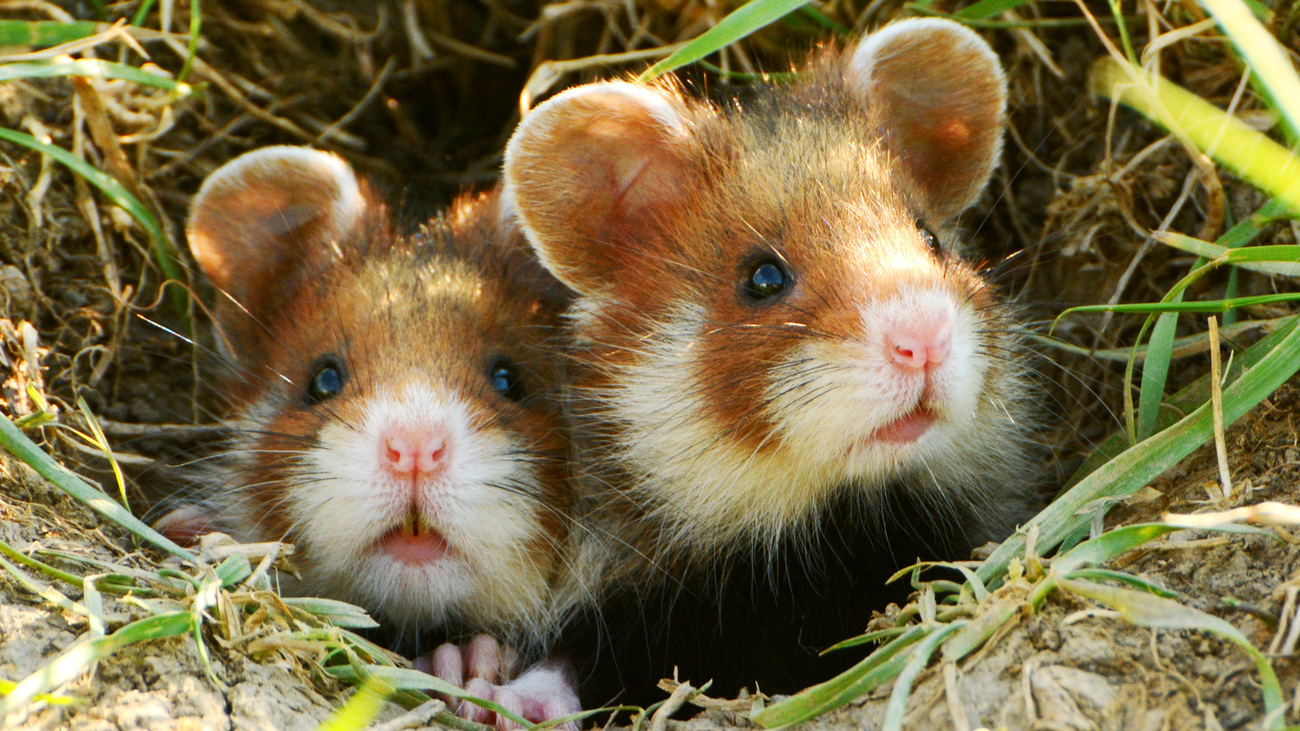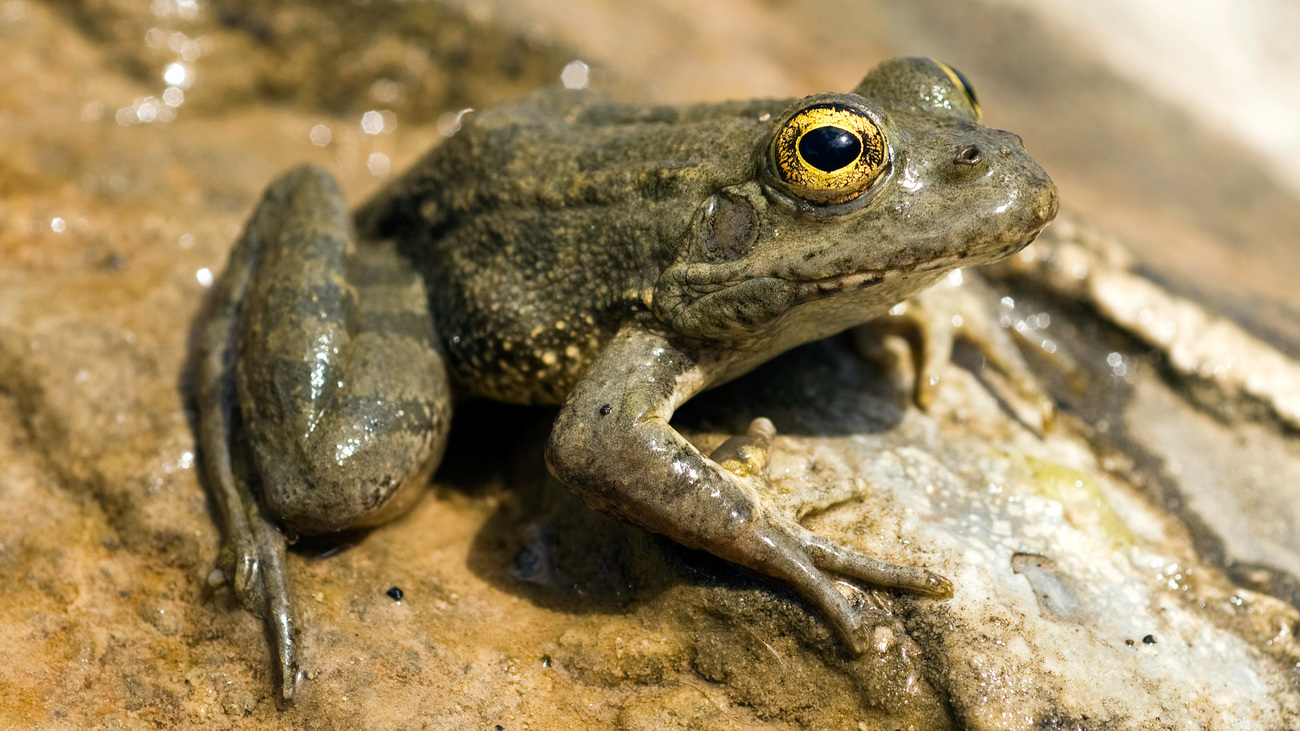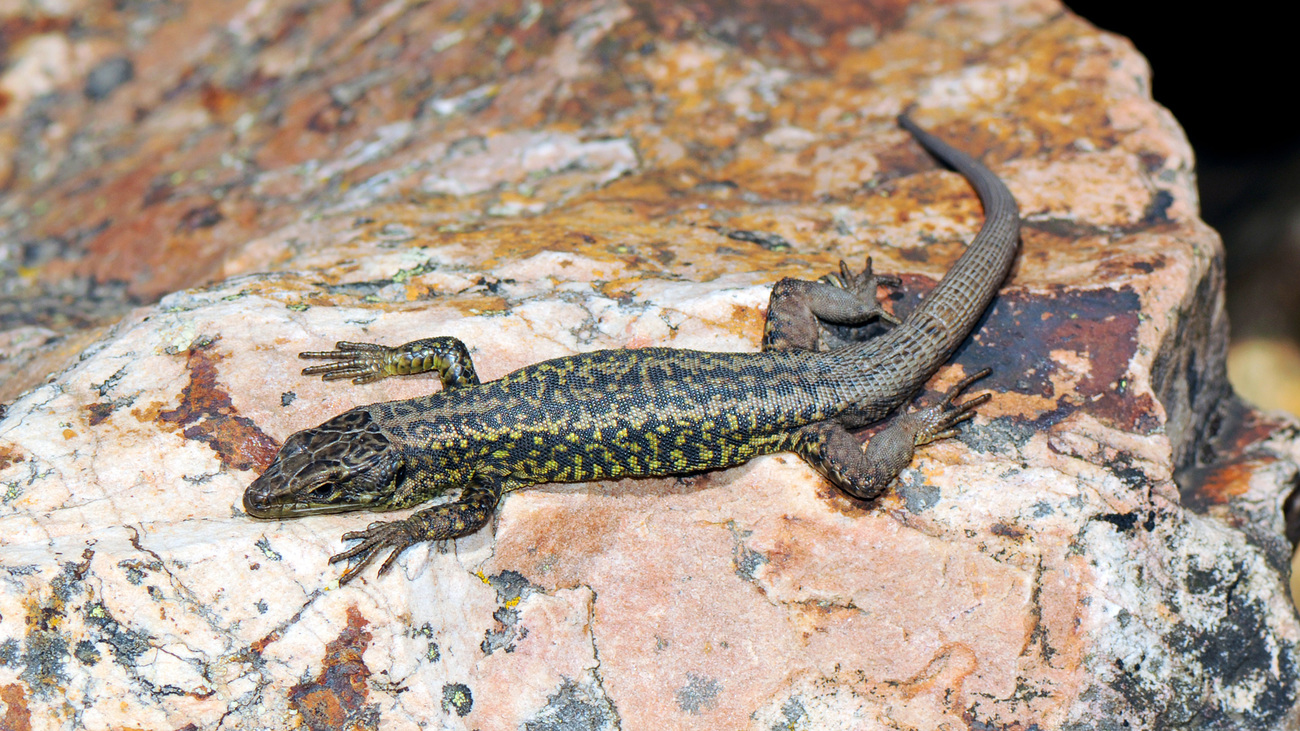10 of the most endangered animals in Europe in 2025
10 of the most endangered animals in Europe in 2025
While it’s well known that many animal species are endangered, it’s easy to underestimate the true extent of the problem. In 2025, a staggering 19% of European animals face the threat of extinction. This alarming statistic is a stark reminder of the important actions needed to protect and preserve the continent’s wildlife.
As an international conservation and animal rescue organisation, IFAW is dedicated to doing just that. We work in Europe and around the world to rescue animals impacted by disaster, preserve wild habitats, and mitigate the effects of climate change. Learn more about our work and how you can get involved.

Though the list of at-risk species in Europe is extensive, in this article, we take a closer look at 10 of the most endangered animals, including highly vulnerable species with populations on the verge of extinction.
Each of the animals below faces a unique set of challenges and threats, making it all the more important to educate ourselves on how to conserve their declining populations. From the Mediterranean monk seal, which has an estimated population of around 400, to the Bavarian pine vole, which has fewer than 50 individuals remaining, discover some of the most endangered animals in Europe below.
1. Wild hamsters
The common hamster (Cricetus cricetus) is a stout-bodied rodent measuring up to 34 centimetres (13 inches) long, with shorter tails that typically measure around 6 centimetres (2 inches). They typically have long, thick, reddish-brown fur, with round cheeks, small furry ears, and wide feet. The common hamster is not the species that is commonly kept as a pet. Their cousin the golden hamster (Mesocricetus auratus) is the species that is often sought after for the pet trade.
The wild common hamster population is highly fragmented. It’s found in grasslands across many European countries, including the Netherlands, Belgium, France, Germany, Hungary, Slovakia, Romania, and the Czech Republic.
While it’s not known exactly how many hamsters are left in the wild, we do know that they’re critically endangered. Their range has shrunk by an estimated 94% in France and 75% in Eastern Europe. According to the IUCN, if no conservation efforts are taken to protect the wild hamster population, it risks becoming extinct within three decades.
The causes behind the decline of the wild hamster population are complex and unclear. However, it’s thought that a driving factor is habitat loss and fragmentation, caused by the building of infrastructure and roads as well as agricultural practices. The lifespan of the wild hamster is very short—one to two years. Because of this, they would need to produce two litters per year just to maintain their current population levels.
IFAW has supported the wild hamster breeding programme at Kyiv Zoo in Ukraine, a science-based project established by conservationists to increase the wild hamster population. To support this programme, IFAW provided urgent financial support to the Ukrainian Nature Conservation Group (UNCG) from April 2023 to May 2024 to cover expenses related to feed, veterinary care, supplies, and lightweight cages.
2. Karpathos frogs

The Karpathos frog (Pelophylax cerigensis) is typically a green or brown colour with dark patterns and markings. Like most frog species, they have powerful hind legs that enable them to jump relatively far distances for their size and webbed feet that are adapted for swimming. They have large eyes on the sides of the top of their heads, enabling them to see even when sitting in water.
Karpathos frogs are native to the small Greek island of Karpathos. They’re known to inhabit only two of its small freshwater rivers, living in slow or still waters.
According to the IUCN Red List, as of 2023, Karpathos frogs are endangered—a downgrade from their previous classification of critically endangered. Though their population is sparse, thanks to conservation efforts, it’s thought that their numbers are increasing.
Habitat loss is a major threat to the survival of the Karpathos frog. Human activities, such as deforestation, urban development, water extraction and agriculture, have led to the loss, pollution, and degradation of the frog’s preferred aquatic habitats, making them endangered. Collecting Karpathos frogs for scientific research purposes—while not a major threat—also puts a strain on the species, especially when their range and distribution is limited to such a specific area.
3. Bavarian pine voles
The Bavarian pine vole (Microtus bavaricus) is a very rare, small rodent that is only around 10 centimetres (4 inches) long, weighing just 18 to 28 grams (less than one ounce).
Found hidden in the underground passageways of the Northern Limestone Alps in Austria and parts of southern Bavaria, its brownish fur and small tail provides camouflage. This tiny vole is a herbivore, with a diet made up mostly of roots, grasses, and herbs.
Bavarian pine voles are critically endangered, with fewer than 50 mature individuals remaining in a declining and fragmented population.
The primary threat to Bavarian pine voles is human-caused habitat loss. In the 1980s, the construction of a hospital on the land where Bavarian pine voles were originally discovered destroyed their only known habitat. The forests in which they’re now found are also becoming uninhabitable, as the fertilisers used in agricultural practices pollute the soil and logging destroys the land.
4. Sette Fratelli cave salamanders
The Sette Fratelli cave salamander (Speleomantes sarrabusensis) is a small amphibian species. Its skin is typically a brown to dark brown color, which helps them blend into the dimly lit environments of caves and rocky crevices. The body of the Sette Fratelli cave salamander is elongated and lean, and it has slender fingers and toes, which are also well-suited for navigating the tight spaces in their cave habitats. Their longer tails aid them with balance and movement.
Sette Fratelli cave salamanders live in the forests and rocky areas of Sardinia, Italy. Their habitat is restricted to the Sette Fratelli mountain, between 200 to 800 metres (650 to 2,600 feet) above sea level, with an estimated range of only 70 square kilometres (27 square miles).
While the exact number of Sette Fratelli cave salamanders left in the wild is unknown, the IUCN Red List classifies this species as critically endangered, and its population is reported to be declining.
Around 80% to 90% of the entire population of the species once existed in Sardinia, and their population has declined by up to over 80% over the last three generations.
The very limited geographical range of this species puts it at risk, while capturing the salamander for the pet trade puts a further strain on its survival. Climate change also endangers Sette Fratelli cave salamanders because of the species’ specific microclimatic preferences. As the climate shifts, it affects its distribution and activity. For these reasons, the Sette Fratelli cave salamander is critically endangered.
Other European salamander species are also at risk from diseases that are caused by certain fungal infections, which have significantly reduced global amphibian populations.
5. Peña de Francia rock lizards

Peña de Francia rock lizards (Iberolacerta martinezricai) are relatively small reptiles with distinctive bright green patterns on their mostly dark brown to black bodies. They usually have slender, long bodies, long tails, and relatively short limbs. Like most lizard species, they have triangular heads, with eyes that sit on the tops of the sides of their heads.
They’re found in Spain, specifically in rocky areas at high altitudes, such as mountain peaks.
Previously classed as critically endangered, in 2023, this species was reassessed as endangered. Their population is estimated to be between 1,200 and 1,500.
The construction of roads in the habitats of this lizard species poses a threat to its survival. Seasonal tourism is also a huge factor, causing an increasing number of all-terrain vehicles to be used within their habitat. Climate change may also play a role in the population decline of the Peña de Francia rock lizard, due to temperature shifts, altered habitats, and the increased risk of wildfire.
6. Aeolian wall lizards
What is an Aeolian wall lizard? The Aeolian wall lizard (Podarcis raffonei) is a small lizard species native to specific areas of shrubland and mountain regions within the Aeolian Islands in Italy. They’re known to inhabit a few isolated places on Vulcano Island, as well as very small rocky islets.
Aeolian wall lizards have relatively slender bodies, with flat, triangular-shaped heads. These lizards are agile climbers and often found on walls—as the name would suggest—and rocky outcrops. Their longer tails help them balance, but they can be detached from their bodies to help them escape from a threat.
Previously classed as critically endangered, Aeolian wall lizards were reclassed in 2023 as endangered. Their population is estimated at 2,000 to 2,500 individuals and is declining.
The introduction of alien species to the Aeolian wall lizard’s narrow range of habitat, including non-native predators and competitors, has put the survival of the species at risk. Collecting Aeolian wall lizards and removing them from the wild for scientific research purposes also has contributed to the decline of their population.
7. Oltenia blind mole-rats
The Oltenia blind mole-rat (Spalax istricus) is a rodent species that lives underground. These critically endangered animals are relatively small and have greyish brown fur that helps them to blend into the soil in which they live. Their strong, cylindrical bodies and arms, as well as their claws, are adapted for digging through the soil. Despite being blind and appearing to have no eyes, they do have very small eyes sitting under their skin and fur that can detect light. They have a tail, though it is very short.
Oltenia blind mole-rats are found in Romania, in steppe and forest-steppe grasslands.
However, it’s very possible that Oltenia blind mole-rats are already extinct. Despite extensive search efforts, no data has been recorded about their population in the last 40 years. They are therefore classified on the IUCN Red List as critically endangered.
Blind mole-rats have historically been treated as pests in agriculture, receiving no protection from European laws. When spotted in farms and gardens, they have often been killed. The Oltenia blind mole-rat is also threatened by habitat loss, as humans are converting land for agriculture in their habitats.
8. Angelsharks
The angelshark (Squatina squatina) is a shark with a wide, flat body, resembling a ray or a skate. They’re usually a grey or brown color, which is useful for camouflaging on the seabed. They have two dorsal fins, as well as pectoral fins, which help to distinguish them from rays and skates. Angelsharks have wide mouths full of sharp teeth, helping them capture prey such as fish and crustaceans.
The angelshark is found in the Mediterranean Sea, the Aegean Sea, around the Canary Islands, and around the coasts of Great Britain and Ireland, though its historical range is larger. Its presence is uncertain in many regions it once inhabited.
Angelsharks are critically endangered. While exact numbers aren’t known, it’s reported that the population is decreasing.
There are several factors contributing to the endangered status of angelsharks. They have historically been targeted by the commercial fishing industry for their meat and fins, which has been a significant cause of their population decline. They’re also often unintentionally caught as bycatch in other fishing gear, including trawl nets and longlines. As the species has a slow reproductive rate, they are more susceptible to overfishing.
9. Balearic shearwaters
The Balearic shearwater (Puffinus mauretanicus) is a medium-sized, long-winged seabird that breeds exclusively in Spain’s Balearic Islands. During the breeding season, it can also be found foraging on the Iberian peninsula as well as in Algeria and Morocco. After the breeding season, the species moves to the coasts of southwestern Europe, including Spain, Portugal, France, and the UK. Despite their scientific name, they are not closely related to Atlantic puffins.
The Balearic shearwater is critically endangered, and there are only about 19,000 individual birds remaining. Its population is reportedly decreasing in number.
Currently, the greatest threat to Balearic shearwaters is bycatch—the accidental catching of these birds by fishermen. Bycatch is sadly an issue that affects many animals around the world, including marine mammals and turtles. Predation by introduced species—including rats, cats, and genets—is also an issue. Acute pollution events like oil spills also threaten this species. Oil spills can remove the natural waterproof coating from a seabird’s feathers. When they are no longer waterproofed, these birds may experience effects like hypothermia.
10. Speckled ground squirrels
The speckled ground squirrel (Spermophilus suslicus), also known as the spotted souslik, is a rodent found in Eastern Europe. It has brown and reddish fur with white spots on its back and a short tail. These squirrels can be found in Poland, Belarus, Ukraine, Moldova, and Russia.
Previously classed as near threatened, in 2023, the speckled ground squirrel’s status changed to critically endangered. Their global population has decreased by a staggering 99% in just 30 years. Among other threats, these squirrels have faced habitat fragmentation due to agriculture, forestry, urbanisation, reclamation of wasteland, and industrial development. Decreased precipitation and colder winters caused by climate change have also impacted speckled ground squirrels.
What is being done to protect endangered species in Europe?
There are various initiatives in place at international and European level to protect endangered species. The EU’s new Nature Restoration Law, for example, intends to restore ecosystems and habitats of species on land and in water by setting binding targets for member states.
IFAW is actively committed to the protection of endangered species in Europe and around the world, and they need your help. Preserving biodiversity is vital for animals, people, and the planet.
IFAW also works to rescue animals impacted by disasters in Europe. In recent years, we’ve supported the rescue and rehabilitation of animals affected by wildfires in Greece, floods in Italy, and the war in Ukraine.
Related content
Our work can’t get done without you. Please give what you can to help animals thrive.